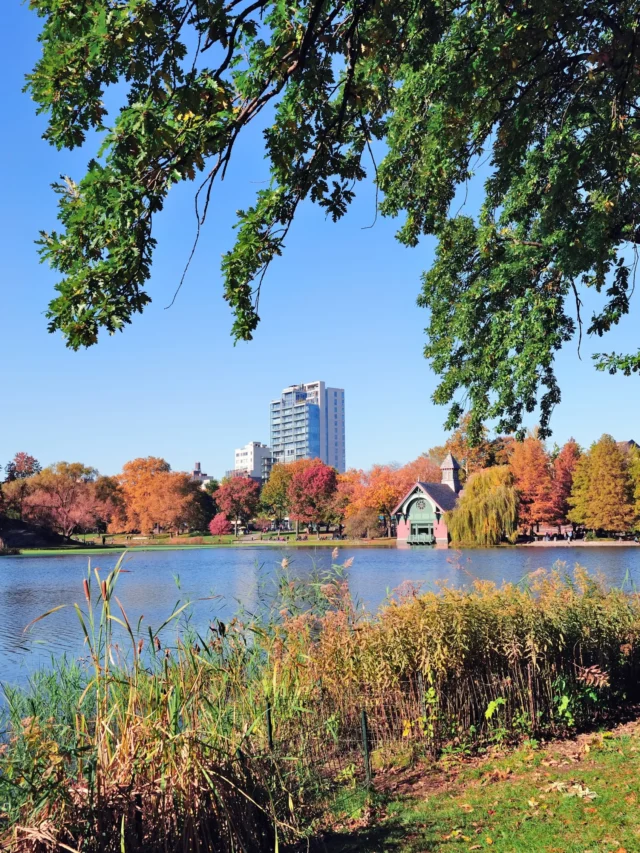Source: flickr/U.S. Fish and Wildlife Service Headquarters By Hani Lee Out-of-control wildfires are making headlines across Canada. Wildfires are natural phenomena that occur every year, but the destruction started earlier in the season this year and with greater force....
By Hani Lee
Out-of-control wildfires are making headlines across Canada.
Wildfires are natural phenomena that occur every year, but the destruction started earlier in the season this year and with greater force. The size and intensity of these fires have dramatically increased in recent years due to climate change, causing alarming disruptions to ecosystems and communities alike.
Indigenous peoples, due to their close connection with land, bear a disproportionate share of the burden, including increased risks to health from wildfire smoke and pollution, displacement from their traditional territories, and consequent loss of cultural and spiritual practices. Furthermore, the traditional knowledge, expertise, and cultural practices of Indigenous peoples that are crucial for responding to wildfires have been consistently undervalued and ignored. This has resulted in further sidelining of their rights.
This blog explores the issue of Canadian wildfires and their consequences on Indigenous rights.
Role of Climate Change on Increased Frequency and Severity of Wildfires
Canada, home to 9% of the world’s forests, is a particular hotbed of wildfires. An average of over 7,000 wildfires occur each year in Canada, burning an area of approximately 2.5 million hectares throughout each wildfire season (between May and September). Although the overall number of annual wildfires has decreased since the 1970s, the average annual area burned has doubled within the same period. The number of large fires spreading over 200 hectares is also increasing, meaning wildfires will likely become more severe and damaging over time.
Experts identify human-induced global climate change as a significant contributing cause of this increase. Extreme fire weather conditions fuelled by lower humidity and higher temperatures have resulted in more frequent lightning strikes and more fuel availability, creating ideal conditions for the ignition and spread of wildfires. With global temperatures steadily increasing, possibly surpassing the 1.5C limit by the year 2027, we can expect to see the devastating impact of wildfires worsen over the next decade and beyond.
Wildfire Impact on Indigenous Communities
Making up 5% of the total population, Indigenous peoples are disproportionately affected by the threat of increasingly destructive wildfires. Roughly 80% of Indigenous communities are located in or near remote, fire-prone regions, yet many lack the necessary resources and infrastructure to respond effectively to and recover from disastrous wildfire events. The ongoing legacies of colonialism exacerbate the problem as Indigenous communities are sidelined in decision-making processes regarding wildfire response and management.
Wildfires, therefore, cause more than just immediate environmental damage. They also undermine the inherent rights and practices of Indigenous communities, which have a deep connection to the land and its resources.
The United Nations Declaration on the Rights of Indigenous Peoples (UNDRIP), which was adopted by the United Nations in 2007 and officially endorsed by Canada in 2016, sets out a global standard for the rights of Indigenous peoples, many of which can be and are being directly threatened by wildfires. They include those related to health (Article 24), cultural preservation (Articles 11.1, 12.1, and 13.1), and land and resource stewardship (Articles 25, 26, 29.1, and 32.1).
Health
The right to health is a fundamental human right recognized by the United Nations and the World Health Organization. This right applies to all individuals, including Indigenous peoples. According to Article 24.2 of the UNDRIP, Indigenous peoples have “an equal right to the enjoyment of the highest attainable standard of physical and mental health.”
This does not mean the right to be healthy, but rather the right to enjoy resources, facilities, services, and conditions that make healthy living possible. Thus, it extends not only to access to timely and appropriate healthcare (as affirmed in Article 24.1 of the UNDRIP) but also to the underlying determinants of health, such as clean air and a healthy environment.
Indigenous peoples who live in close proximity to wildfires face difficulty in protecting this right. The smoke generated by wildfires contain harmful pollutants, such as fine particles and toxic gases, which degrade air quality and reinforce existing health inequities.
For example, compared to the non-Indigenous population, Indigenous peoples already experience a higher rate of chronic respiratory diseases like asthma and chronic obstructive pulmonary disease. Exposure to wildfire smoke can exacerbate such conditions, severely impair respiratory functioning, and increase risk of cardiovascular disease and cancer.
Freshwater availability and quality are also affected by wildfires, which, coupled with existing challenges in accessing clean and safe drinking water, can deprive Indigenous peoples of the opportunity to achieve good health.
Furthermore, there can be detrimental impact on mental health and emotional wellbeing. Studies show that the persistent presence of dense smoke, loss of homes and belongings, and destruction of traditional lands lead to intense stress, fear, and anxiety, as well as feelings of isolation and uncertainty about the future. Access to mental health services is crucial for affected communities, but it is often limited or inadequate.
Cultural Preservation
Uncontrolled wildfires jeopardize not only the health and safety of Indigenous communities but also their cultural rights, which are deeply intertwined with the land and its resources. Articles 11.1, 12.1, and 13.1 of the UNDRIP recognize the right of Indigenous peoples to practice, revitalize, and transmit their cultural traditions; maintain their spiritual and religious practices for present and future generations; and protect their sacred sites, artifacts, and ancestral remains.
Wildfires often ravage through these sacred lands, burial grounds, hunting areas, and other culturally and spiritually significant sites, threatening the very foundation of Indigenous peoples’ cultural heritage and undermining their essential role as stewards of the environment.
In addition, hunting, fishing, trapping, and foraging have been integral parts of Indigenous peoples' way of life for generations. These land-based activities not only provide sustenance for their communities but also help foster a deep connection with their cultural heritage. Wildfires disrupt these practices through the destruction of land and of resources that are critical to their physical and cultural survival.
Racine Jeff, a member of the T?ilhqot’in Nation, recounts her experience of surviving the Williams Lake wildfire in 2017:
That year, we weren’t even able to get our winter supply. Where our fishing grounds were, Gwetsilh, there were fires all the way through. Anybody that was out camping, trying to gather food, got evacuated. We go every summer and we camp and gather salmon. We weren’t able to go out and do that that year. … We weren’t able to hunt either because there were so many wildfires and they lasted until late in the season.
The transmission of cultural teachings from older generations to younger generations plays a critical role in preserving Indigenous knowledge. Yet with important parts of the community, culture, and land being lost in the fire, there are valid concerns about the continuity of this knowledge.
These concerns are exacerbated by the temporary evacuation and long-term displacement of Indigenous peoples from their traditional territories. In many cases, Indigenous people become separated from their families and friends and are sent to communities that cannot adequately accommodate their needs.
Threats to Indigenous Fire Stewardship
Article 25 of the UNDRIP affirms the distinctive spiritual relationship that Indigenous peoples have with their traditionally owned or otherwise occupied and used lands, territories, and resources. Articles 26, 29.1, and 32.1 further acknowledge the right of Indigenous peoples to use, develop, and protect those lands and resources in accordance with their own priorities and strategies.
The main threat to this right comes not from the wildfires per se, but from the lasting impact of colonialism on wildfire response and management.
According to Hoffman et al.:
Wildfire management agencies in Canada devolved from colonial government systems; therefore, they monopolize power in terms of wildfire management decision-making.
Indeed, Indigenous communities are often left out of decisions about forest management and fire response, as was the case during the Fort McMurray wildfire in 2016. Even where Indigenous knowledge is sought, “knowledge appropriation is substituted for ‘meaningful engagement’ with Indigenous fire practitioners.” In fact, as Hoffman et al. notes, there are very few examples of Indigenous-led fire management initiatives in Canada.
Cultural burning, also known as controlled burning or prescribed fire, is a traditional Indigenous land management practice involving planned and controlled use of fire. Despite ample evidence of its effectiveness in mitigating the severity of wildfires and providing numerous ecological advantages, this practice has been largely ignored by the government and even suppressed due to jurisdictional issues.
The continued restraint on cultural burning practices not only contributes to the escalating wildfire crisis, but infringes upon the right of Indigenous peoples to conserve and protect their land in accordance with their self-determined strategies.
Conclusion
The growing threat of wildfires in Canada casts a shadow over the lives of Indigenous peoples, impacting their right to health, cultural preservation, and land and resource stewardship. The key to effective wildfire response and management lies in the knowledge and leadership of Indigenous communities, which are intricately connected with the land for generations. By decentralizing efforts and empowering Indigenous communities to lead and engage in wildfire management, we can work towards a future where wildfires are no longer a devastating threat but a manageable aspect of our ecosystem.






![Business-Driven Marketing (BDM): 8 Steps to Drive Business Impact [+14 Templates]](https://gustdebacker.com/wp-content/uploads/2024/07/Business-Driven-Marketing-1024x576.png)









